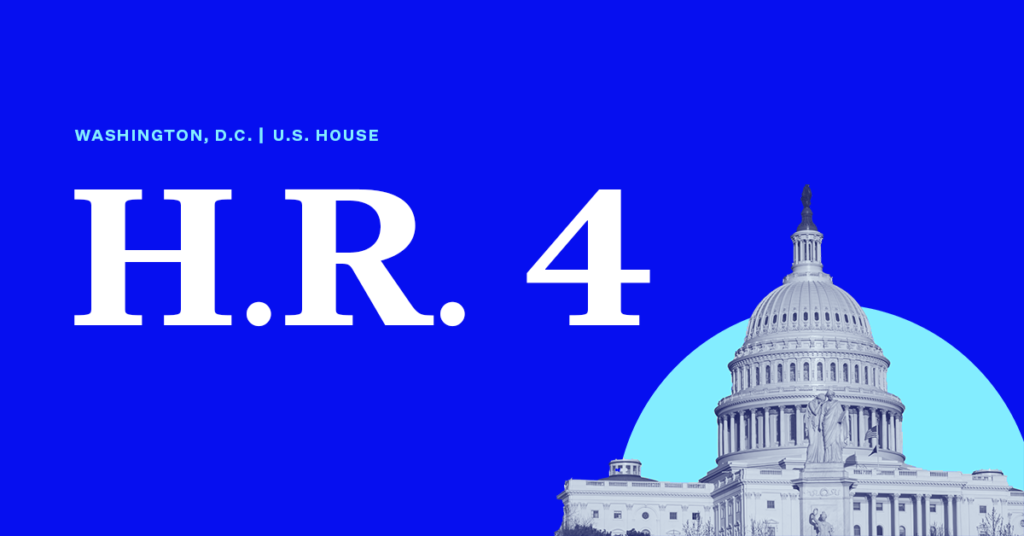The John Lewis Voting Rights Advancement Act Unpacked

“Ordinary people with extraordinary vision can redeem the soul of America by getting in what I call good trouble, necessary trouble,” Rep. John Lewis (D-Ga.) wrote in an op-ed shortly before his death in 2020. “Voting and participating in the democratic process are key. The vote is the most powerful nonviolent change agent you have in a democratic society.”
The U.S. House of Representatives followed through on this call to action, passing the John Lewis Voting Rights Advancement Act, H.R. 4, on Aug. 24. Named after the Georgia congressman and civil rights giant, “this bill not only bears his name, it heeds his call,” wrote the Biden administration in a statement of support. H.R. 4 now heads to the U.S. Senate, where a slim Democratic majority must still contend with the 60-vote filibuster, a procedural tactic that threatens the bill’s passage.
In today’s piece, we’re reflecting on Lewis’ powerful legacy and breaking down the landmark voting rights bill he championed.
The legacy of Congressman John Lewis
Born to Alabama sharecroppers in 1940, Lewis grew up in the era of Jim Crow and soon became one of the most prominent leaders of nonviolent resistance. He led lunch counter sit ins in Nashville and joined the original Freedom Riders as they challenged racial segregation on public transportation, continually arrested and attacked across the South.
Lewis spoke at the March on Washington at only 23 years old, a mass rally that led to the adoption of the Civil Rights Act of 1964. Following the adoption of the momentous civil rights bill, activists focused on registering Black voters, despite open intimidation. On March 7, 1965, activists marched from Selma to Montgomery, Alabama to protest the continued denial of voting rights. The group, led by Lewis, faced a brutal attack from state troopers that left Lewis with a fractured skull. The widely shared images from that day, deemed Bloody Sunday, shocked the conscience of the nation and galvanized Congress to pass the Voting Rights Act of 1965 (VRA).
On Aug. 17, 2021, Rep. Terri Sewell (D-Ala.) formally introduced H.R. 4 in front of the infamous Edmund Pettus Bridge where Lewis and fellow civil rights leaders and activists risked their lives for voting rights over a half-century earlier.
What does the bill do, exactly?
H.R. 4 restores key provisions of the VRA, which federal courts have chipped away at in recent years. In Shelby County v. Holder (2013), the U.S. Supreme Court struck down one of the VRA’s most powerful tools — federal government oversight that ensured states did not pass discriminatory laws.
Section 5 of the VRA subjected states or counties with histories of voter suppression to pre-approval before enacting new legislative changes. Section 4 outlined the formula to determine which jurisdictions were covered by Section 5’s pre-approval process. When the Supreme Court’s conservative justices ruled that the oversight formula was outdated and thus an unconstitutional burden on states, Section 5 became inutile and states immediately pushed for new restrictive voting measures.
The Supreme Court has the power of judicial review; however, Congress can pass new laws to restrengthen voting rights protections. H.R. 4 utilizes this legislative power to:
- Update the Section 4 formula with current data on racially inequitable voting practices.
- Add a 25-year “rolling period” so only states with recent, persistent violations are covered.
- Strengthen Section 2 of the VRA, eroded by the Supreme Court in Brnovich v. Democratic National Committee earlier this summer.
How is it different from the For the People Act?
The For the People Act, H.R. 1, is another significant piece of voting rights legislation. These are distinct bills that tackle different challenges, though both are part of the same electoral reform effort by Democratic lawmakers. H.R. 1 establishes a minimum national standard for voting access, but also moves beyond to cover campaign finance, ethics and redistricting in a bill that spans over 800 pages. H.R. 4 is not simply a subsection or more narrow version of H.R. 1, as often described, but utilizes a unique federal power to specifically tackle racial voter suppression and discrimination across the states.
What is the bill’s path to passage?
H.R. 4 passed twice in previous sessions — most recently on a party-line vote with all Democrats in favor and all Republicans opposed — but faces an uphill battle in the Senate. Sen. Joe Manchin (D-W.Va.) and his Republican colleague Sen. Lisa Murkowski (R-AK), who showed hesitation on the For the People Act, have signaled their support for H.R. 4. Even with the full Democratic caucus on board, lockstep Republican opposition and the Senate filibuster threaten the bill’s success. Manchin and his colleague Sen. Kyrsten Sinema (D-Ariz.) have voiced opposition to both eliminating or changing the filibuster rules, with the rest of their caucus falling somewhere in between eliminating it and being open to other reforms.
“Voting rights will be the first matter of legislative business when the Senate returns to session in September. Our democracy demands no less,” said Senate Majority Leader Chuck Schumer (D-N.Y.) as the Senate left for August recess. The Senate is expected to consider both H.R. 1 and H.R. 4 when they return on Sept. 20.